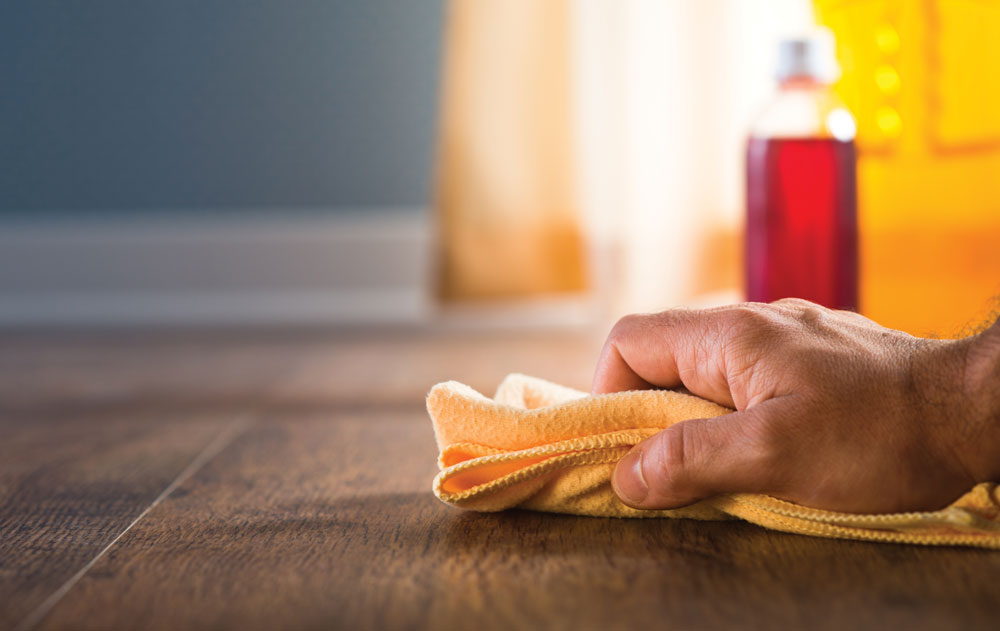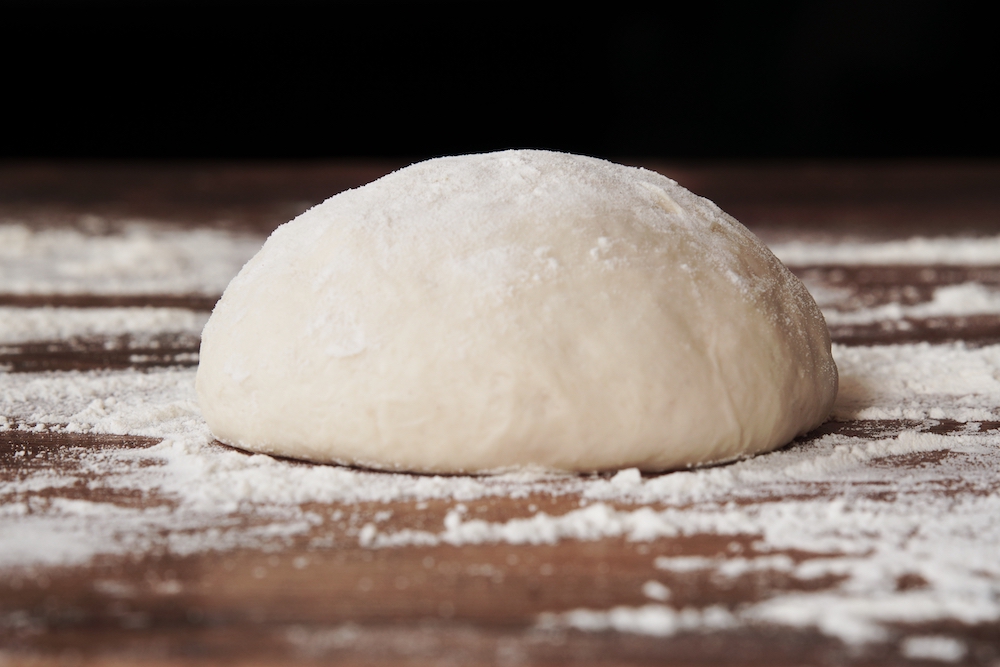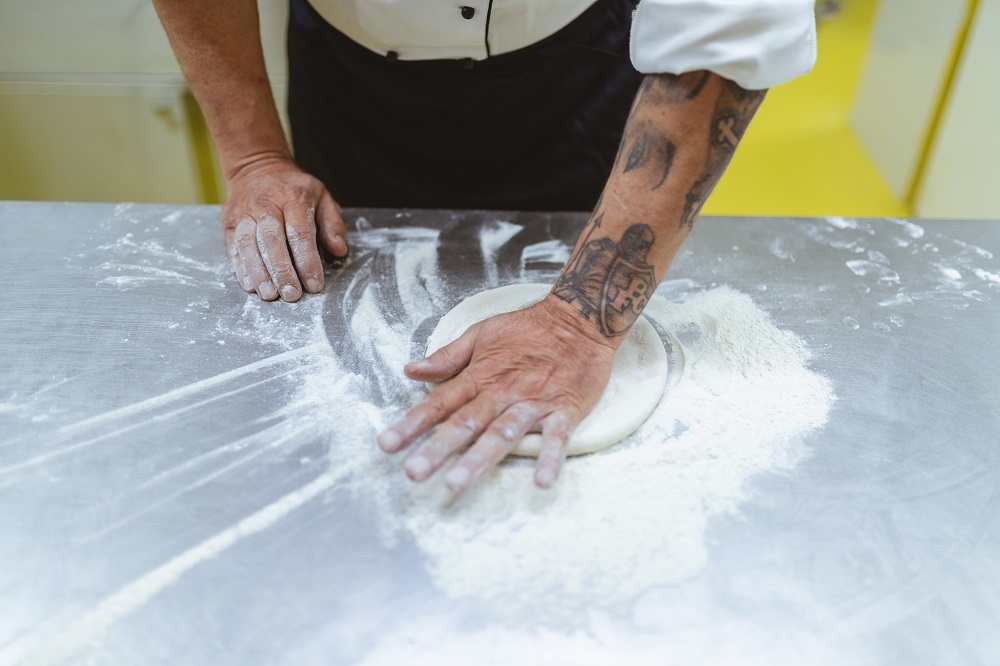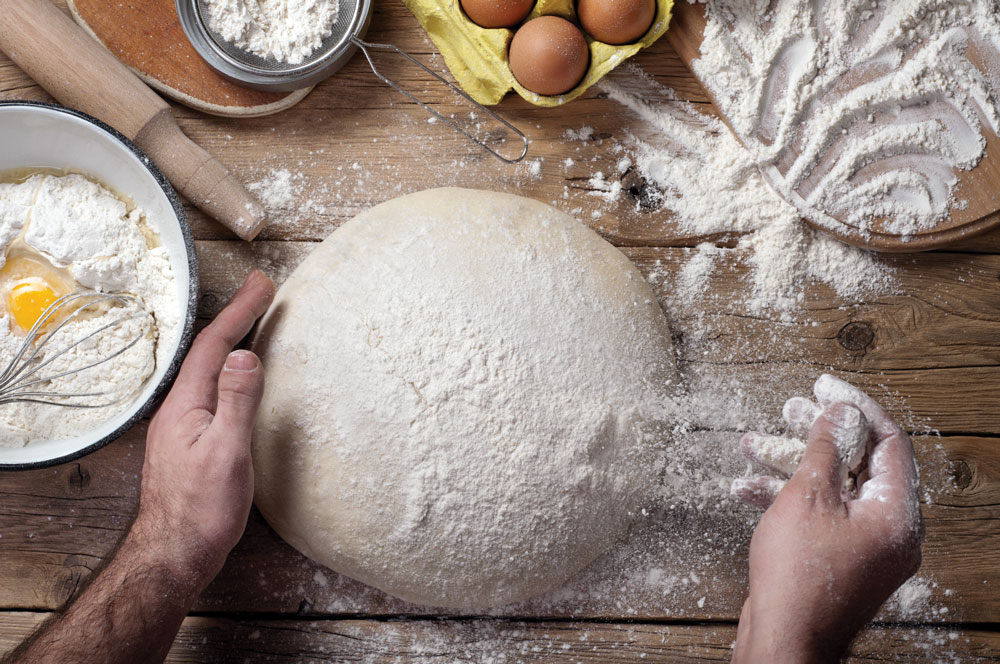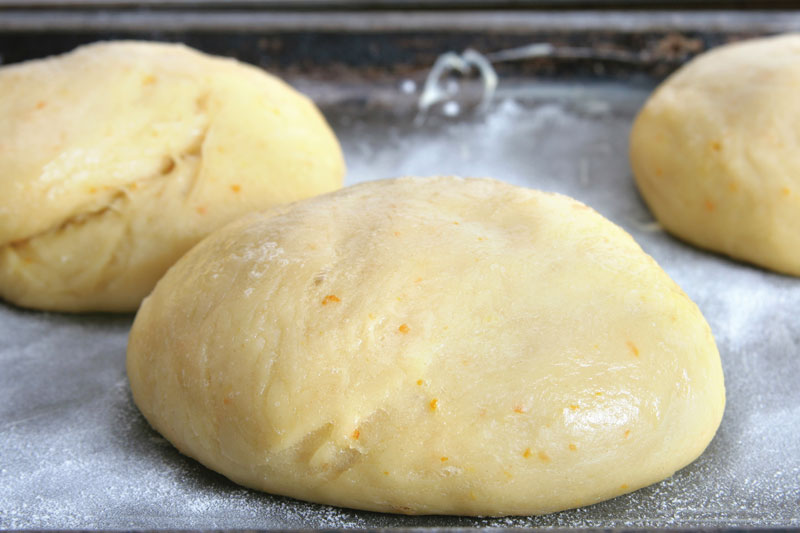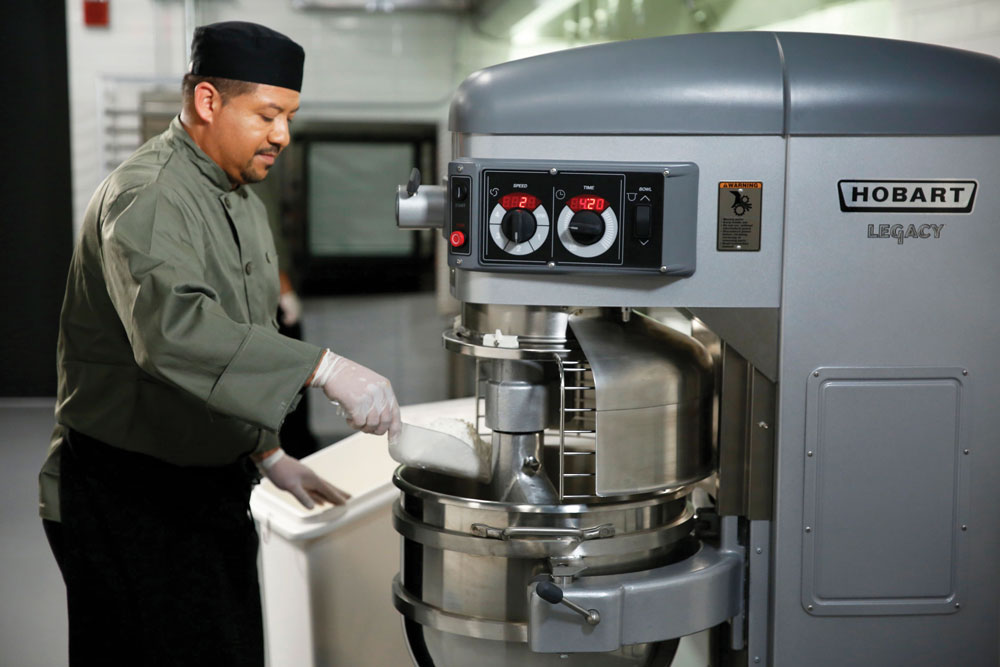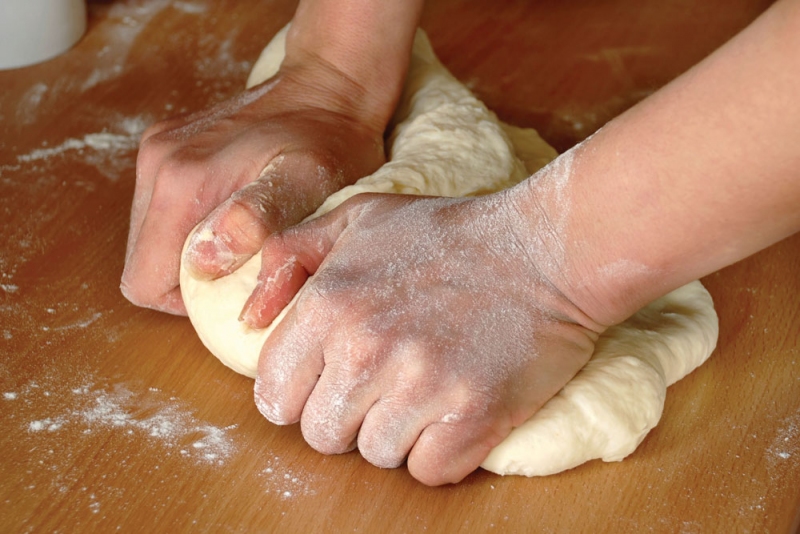Q: We open our dough balls on a wood surface. After we wash it, the surface gets rough and needs to be sanded to maintain its smoothness. How can we solve this problem?
A: The wood surface should not be washed in the conventional way. Ordinary washing causes the wood to absorb water, which raises the wood grain and results in the roughness you are experiencing. Instead, clean your wood surface regularly with a metal-blade bench scraper, held at about a 25° angle. This allows the square edge to remove any adhering material from the surface while also removing errant wood fibers, resulting in the development of a very smooth surface over time.
When the surface must be washed, any water applied to the surface should be removed quickly to prevent water absorption. To do this, apply warm water to the surface and immediately scrub it with a plastic scrubbing pad or a plastic, bristly scrubbing brush (a pot brush works nicely). Then, using your bench scraper, scrape the surface (working with the grain, not against it) to remove the water and debris from the surface. The bench scraper will act like a squeegee, removing the water, while the square edge of the blade will remove any material stuck to the wood.
After thoroughly scraping the surface, wipe off any water and buff the surface with a clean, damp towel, turning frequently. Wipe it dry with a clean, dry towel. Let it air-dry for a few minutes and apply a coat of mineral oil to the wood to seal it. This might take several applications if the wood hasn’t been sealed recently; in that case, apply the oil and allow it to soak in, then apply again as needed until the oil begins to puddle on the surface. After an hour, wipe off any remaining oil and buff with a clean towel. The bench is now ready for use.
I recommend buffing the surface before you leave for the night so the oil can thoroughly soak into the wood overnight. The next morning, give it a quick wipe with a clean towel, and the surface will again be ready to use.
This deep-cleaning procedure generally needs to be done only once a week. For daily cleaning, I like to first scrape the surface, then apply some hot water and scrape it once again. Wipe off any residual water and finish by rubbing a light application of mineral oil into the wood.
Unfortunately, I have seen beautiful wood bench tops destroyed or left in a condition where only complete resurfacing would restore them to workable condition. This happens when the bench scraper is used incorrectly. A new bench scraper has an edge that is perfectly perpendicular to the sides of the blade—in other words, the edge is square, not beveled like a knife, and the ends of the blade are rounded to prevent them from gouging the wood. With use, the blade becomes dull and rounded as the square corners are worn off. Now you have to apply additional force to the scraper to get it to perform properly, and the wood will likely be gouged as you keep adjusting the angle at which it is held, trying to make it work.
Instead, just resharpen the blade, putting a square edge on the blade, not a tapered, knife-like edge. To do this, use a long, fine-cut file laid on a flat surface and, holding the scraper perpendicular to the file, pass the scraper over the cutting edges of the file several times to reestablish the square edge. Wipe off the blade to remove any metal particles, wash and sanitize, and you’re good to go. Do this once a week or as needed to keep the bench scraper performing as it should. Over time, the rounded corners of the scraper blade will become more pointed/squared. When this happens, just make several strokes with the file over each corner to maintain the rounded profile.



